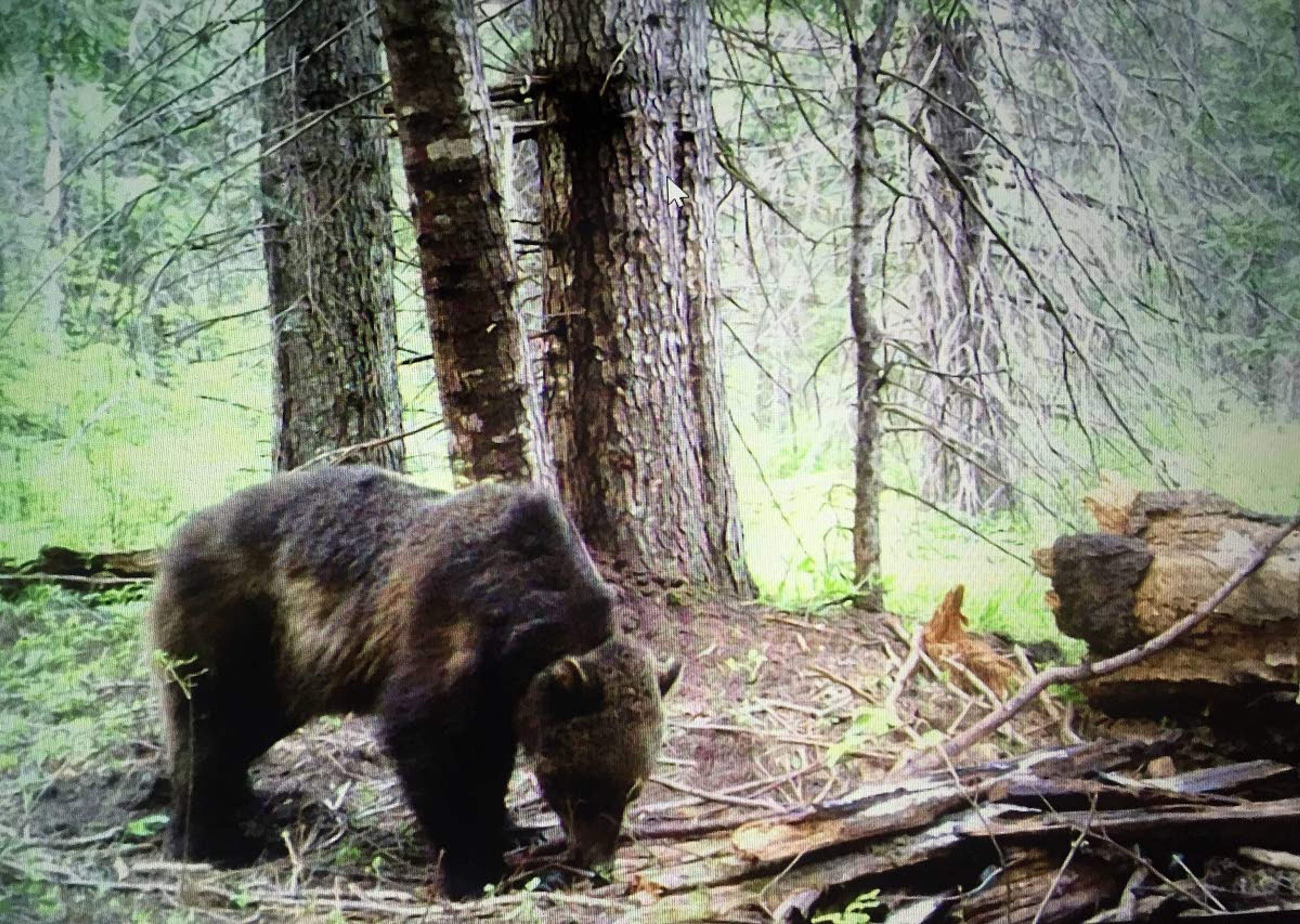A grizzly bear roaming the backcountry of the upper Clearwater River Basin has reversed course and started to move north.
Wayne Kasworm of the U.S. Fish and Wildlife Service at Libby, Mont., said the 3-year-old male grizzly who is wearing a satellite tracking collar was last detected in Brushy Fork Creek, a tributary to the Lochsa River.
“He is still south of (U.S.) Highway 12 and up fairly close to the divide but on the Idaho side,” Kasworm said. “It’s kind of interesting. He has turned around because he had been doing nothing but going south for some time now.”
The wandering bruin moved as far south as Frog Lake and Frog Mountain in the Selway-Bitterroot Wilderness Area before doing a 180.
The bear was trapped and released into the Cabinet Mountains of Montana last year. From there, he moved south and was eventually recaptured and returned to the Cabinets after visiting a black bear baiting site. But the bear again headed south before returning to the Cabinets to den for the winter.
After emerging from its den this spring, the bear moved south into Idaho, eventually crossing the St. Joe River Basin and entering the North Fork of the Clearwater River Basin through the Mallard Larkin Pioneer Area. Its image was captured in June by an outfitter’s trail camera at a black bear bait site in the North Fork Basin. It continued moving south and crossed U.S. Highway 12 and the Lochsa River into the Selway-Bitterroot Wilderness. The animal has largely stayed in Idaho, but crossed the Bitterroot Divide and was briefly in Montana.
Kasworm said the bear is likely feeding primarily on ripe huckleberries and other berries.
“Those are the types of the food that really put fat on a bear,” he said.
Grizzly bears are protected as threatened under the Endangered Species Act. The bear is within a vast area that has been identified as the Bitterroot grizzly bear recovery area.
Barker may be contacted at ebarker@lmtribune.com or at (208) 848-2273. Follow him on Twitter @ezebarker.










